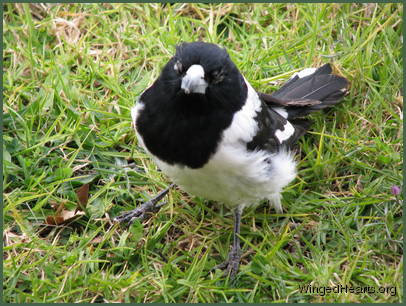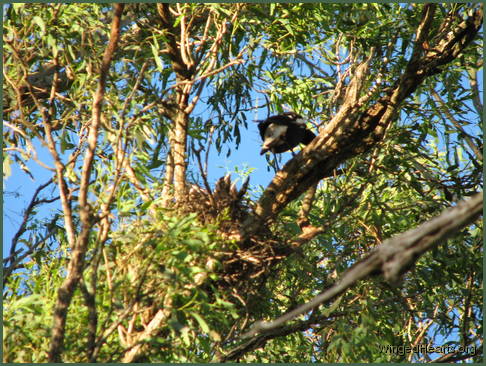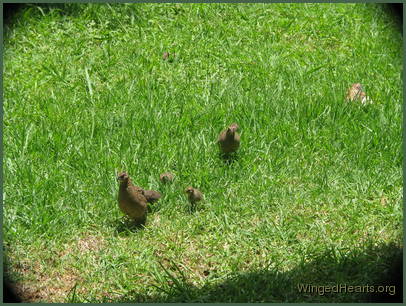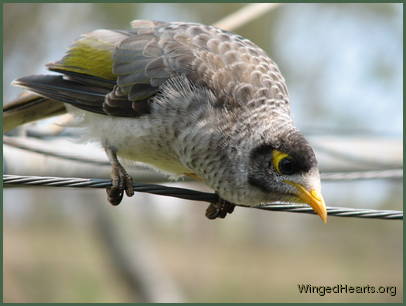 |
Identifying Individual Birds: | Communicating with Wild Birds: | Bird Intelligence & Relationships | Other Hearts |
 |
|
| Communicating - Articles | Not Just A Bird.... | Meeting Maggie | Flying Foxes & Bats | |||
| Rescuing Birds | No Life for Caged Birds | |||||
| Feathery Tales | Your Winged Friends | The Sticky Beak - Slideshows | Books | |||

 Pied butcherbirds are prone to conjunctivitis, much more so than their cousins the
Pied butcherbirds are prone to conjunctivitis, much more so than their cousins the  In this picture
In this picture  I'm going to detract from the birds and tell you about the goanna today. They are also called the Australian Monitor Lizard. They are predatory creatures and hunt for birds, eggs, snakes, smaller lizards and insects. they often take chicks and eggs out of birds' nests or catch a bird when its resting.
I'm going to detract from the birds and tell you about the goanna today. They are also called the Australian Monitor Lizard. They are predatory creatures and hunt for birds, eggs, snakes, smaller lizards and insects. they often take chicks and eggs out of birds' nests or catch a bird when its resting. For the last two days I've been telling you about
For the last two days I've been telling you about  The
The 




